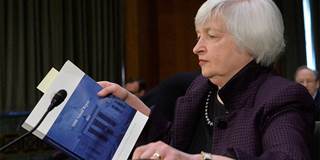This year, for the first time since 2007, every advanced economy in the world is growing – including America’s. And that means that the Federal Reserve, fearful of asset bubbles, will at some point decide that US interest rates must rise. That may be good for the US economy, but what will it mean for the rest of the world?
VIENNA – The United States Federal Reserve is the world’s most powerful bank, and its most powerful component is the Federal Open Market Committee (FOMC), the twelve men and women who meet eight times a year to determine – essentially by setting interest rates – the monetary policy of the world’s largest economy. The last time the Fed raised interest rates was in 2006, before the growth-sapping impact of the global financial crisis persuaded it and other central banks to lower rates effectively to zero and to employ so-called quantitative easing (QE) to pump money into advanced economies.

VIENNA – The United States Federal Reserve is the world’s most powerful bank, and its most powerful component is the Federal Open Market Committee (FOMC), the twelve men and women who meet eight times a year to determine – essentially by setting interest rates – the monetary policy of the world’s largest economy. The last time the Fed raised interest rates was in 2006, before the growth-sapping impact of the global financial crisis persuaded it and other central banks to lower rates effectively to zero and to employ so-called quantitative easing (QE) to pump money into advanced economies.